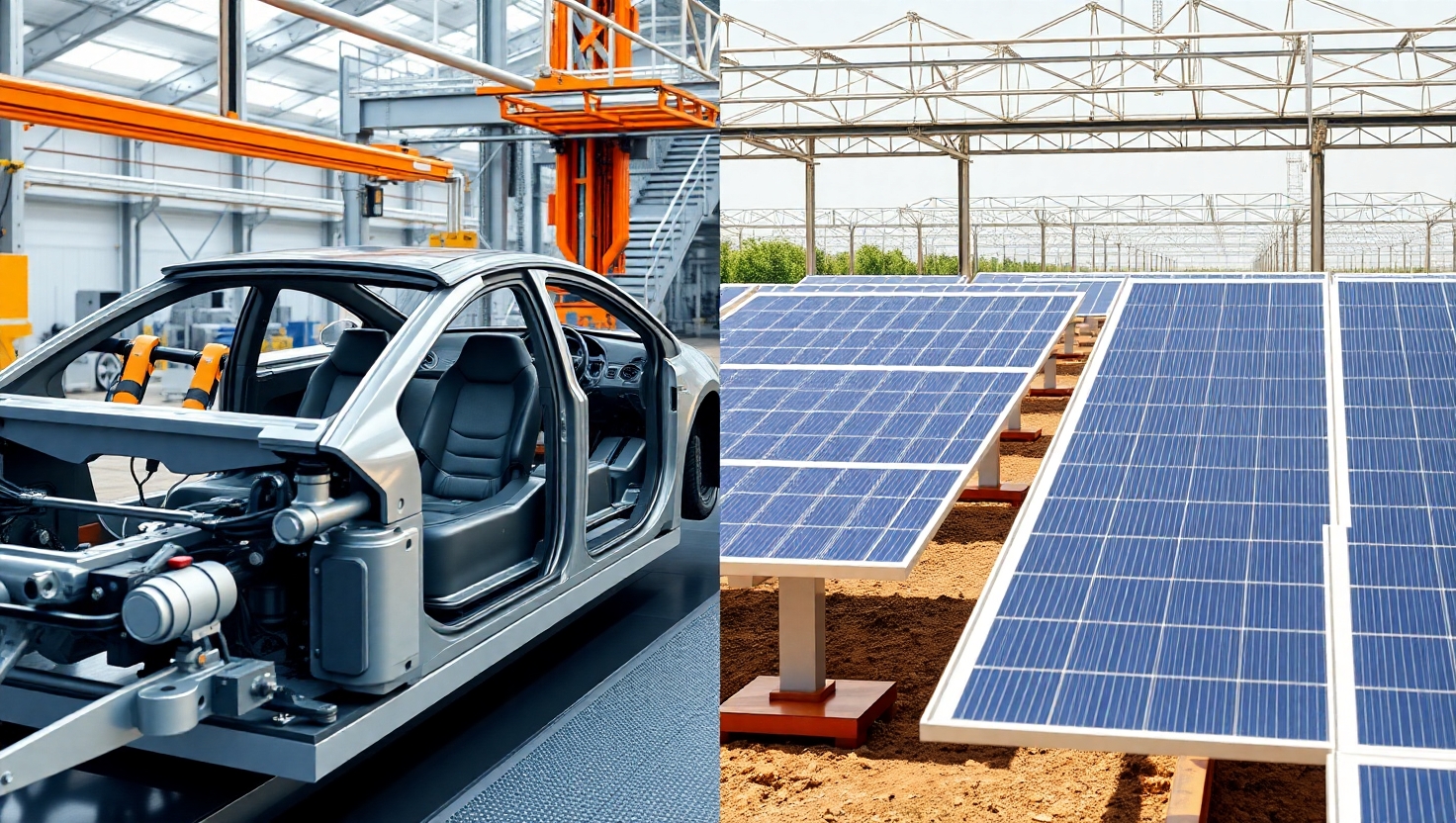Uses of Aluminium in the EV and Solar Industry 2025
Published by: ALUTimes | Updated on: July 7, 2025
Introduction
As the world races toward clean energy solutions, aluminium has emerged as a critical material driving progress in both the electric vehicle (EV) and solar power sectors. Its unique properties — lightweight, corrosion resistance, high conductivity, and recyclability — make aluminium the metal of choice for green technologies. In 2025, its demand in these industries is expected to grow exponentially.
Why Aluminium is Important in Green Energy
- Lightweight: Reduces vehicle weight, improving EV battery range and efficiency
- Corrosion-resistant: Withstands harsh weather conditions in solar installations
- Recyclable: 100% recyclable without loss of quality, supporting sustainability goals
- High electrical conductivity: Enables effective current flow in battery casings and connectors
Aluminium in the EV Industry
1. Body and Chassis Components
EV manufacturers like Tata, Tesla, and Mahindra use aluminium for body frames, bumpers, doors, and roofs to reduce weight while maintaining structural strength. This results in better battery range and energy efficiency.
2. Battery Enclosures
Aluminium is widely used to manufacture EV battery enclosures and thermal management systems. Its thermal conductivity helps dissipate heat from lithium-ion batteries, enhancing performance and safety.
3. Charging Infrastructure
Aluminium components are used in EV charging stations, including wiring, connectors, and outer panels. Its durability and conductivity make it ideal for fast-charging hardware.
4. Motor Housings and Control Units
Motor casings, inverters, and electronic housings use die-cast aluminium to provide EMI shielding and protect internal components.
5. Lightweight Wheels and Suspension Parts
Aluminium alloy wheels and suspension arms reduce unsprung mass, improving ride quality and vehicle handling in EVs.
Aluminium in the Solar Industry
1. Solar Panel Frames
Aluminium is the standard material used to fabricate solar panel frames due to its lightweight, corrosion resistance, and strength. It keeps panels stable in harsh conditions like rain, heat, or wind.
2. Mounting Structures
Solar panels installed on rooftops or ground-mounted systems rely on aluminium mounting structures. Aluminium extrusions offer precision, lightweight support that lasts decades.
3. Reflectors and Mirrors
Some solar thermal systems use aluminium sheets as reflectors to focus sunlight on heating elements. Its reflective nature improves energy concentration.
4. Solar Inverter Casings
Inverters, essential for converting solar energy into usable AC power, often use aluminium housings to manage heat and protect internal electronics.
5. Cables and Connectors
Aluminium is sometimes used in power cables and solar connectors where conductivity and weight reduction are necessary at scale.
Market Trends (2025)
- India’s EV aluminium demand: Expected to grow by 35% YoY
- Solar industry share: Aluminium accounts for 85% of solar frame material globally
- Price outlook: Demand will influence aluminium price volatility in 2025–2026
- Government push: India’s PLI and FAME II schemes encourage local aluminium usage
Top Companies Using Aluminium in EV & Solar
- Tata Motors
- Mahindra Electric
- Olectra Greentech
- Sungrow India
- Jakson Solar
- Adani Solar
- Hindalco Industries (Raw Material Supplier)
- Jindal Aluminium
- Global Aluminium Pvt Ltd
Future Outlook
By 2030, aluminium’s role in EV and solar will be even more critical as India aims for net-zero carbon targets. Innovation in aluminium alloys, 3D printing, and coatings will enable even broader use in batteries, solar structures, and vehicle architecture.
Conclusion
Aluminium is indispensable for a cleaner future. Its application in electric mobility and renewable energy not only meets performance goals but also supports sustainability and recycling targets. Companies and investors focusing on aluminium applications are poised for strong growth in the coming decade.
Disclaimer
The information presented in this article is based on industry estimates and publicly available data as of July 2025. Readers are advised to verify specific figures or projections before using them in investment or business planning.

